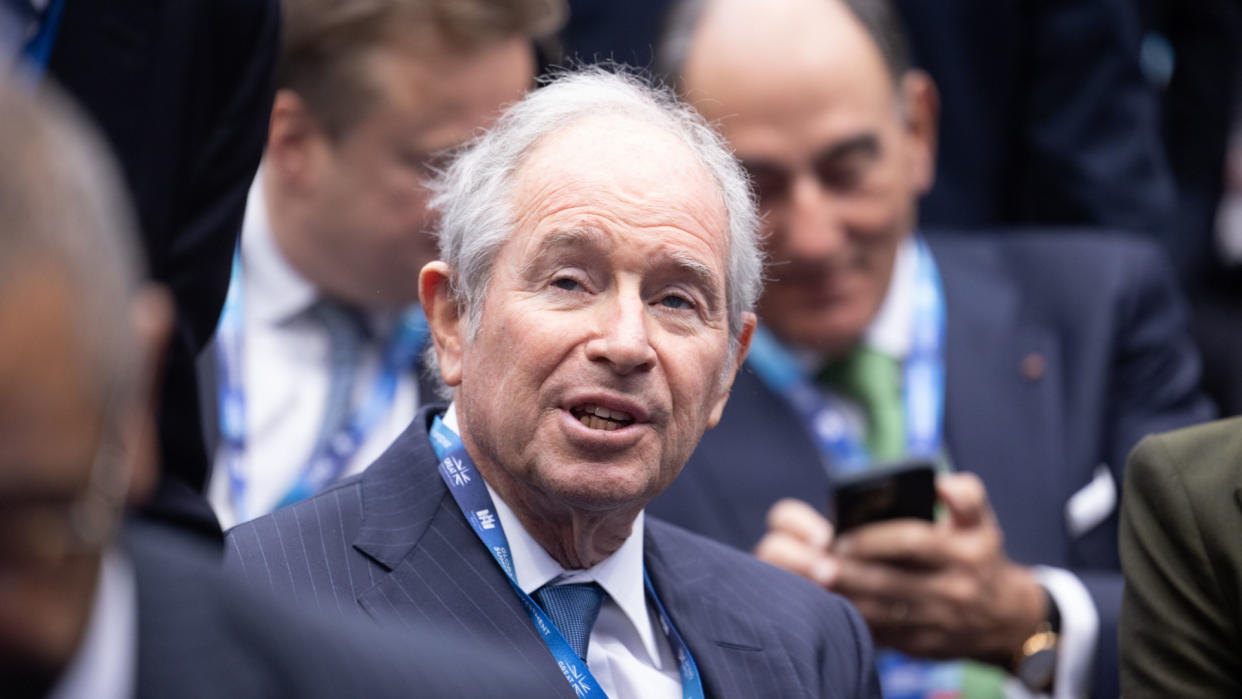Billionaire Investor Steve Schwarzman: 5 Investing Rules Everyone Should Follow

Steve Schwarzman founded Blackstone in 1985, and it has since become the world’s largest alternative asset manager, with more than $1 trillion in assets. Schwarzman himself has racked up a net worth of $39 billion, according to Forbes.
Check Out: 5 Genius Things All Wealthy People Do With Their Money
Discover More: 10 Valuable Stocks That Could Be the Next Apple or Amazon
The Blackstone CEO has followed a few investing rules of thumb to propel both his personal portfolio and his firm. Here are a few of the strategies he swears by for success.
Invest In Alternative Assets
While Schwarzman was working at Lehman Brothers in the 1980s, he saw the potential of investing in private equity.
“I thought we could raise much more money as one of the largest investment firms in the world,” he told Forbes. “The executive committee of Lehman turned down going into the private equity business, which I think was an expensive decision on their part.”
When he started his firm, Schwarzman made alternative assets a key part of his investment strategy.
“Firms like us were the pioneers of going into other alternative asset classes like real estate, hedge funds and credit,” he said.
Schwarzman still recommends these asset classes for investors today.
“Credit remains an extremely good area from a risk/reward perspective,” he said. “Real estate is starting to see a change in its economic cycle because construction across almost all asset classes has significantly decreased. And in private equity, it’s going to become much busier when interest rates start going down later this year — my guess is around Q3 or Q4, but we could have a bit of an earlier surprise.”
Find Out: How I Made $1,000 a Month in Dividend Stocks
Diversify Your Portfolio
Diversification isn’t so much a “strategy” for Schwarzman — it’s just his default way of investing.
“We now have 72 different strategies for investing and, when we started, there was one,” he told Forbes. “So as time has gone by, the world has changed, and it made more sense to kind of diversify and add those new strategies.
“But we never looked at it as diversification,” Schwarzman continued. “We looked at it as different things to go into that were cyclically undervalued where entering in that area would do a really great job for our initial customers who are in other products. So people not familiar with what we were doing and why we were doing it felt we were diversified.”
It’s OK To Pay Top Dollar for a Savvy Investment
Although Schwarzman typically looks for undervalued assets, he’s OK with paying more if he believes it will pay off. This was the case when he invested in Hilton in 2007.
“We knew we were paying a very large price for it, but we believed that there were at least two remarkable opportunities to increase Hilton’s profits,” he said.
By “aggressively” opening new hotels and consolidating Hilton’s three existing headquarters into one, he believed he could add $1 billion to the company’s profits.
“When we bought the company, even though we paid what appeared to be a significant price, we thought the price was quite a good one because we knew what we thought could be relatively easily achieved — and that turned out to be true,” he said. “The natural rebound of the economy, plus that extra billion dollars of profit — as well as continual growth during our whole period and better management of the existing properties — all gave us a total return profit of $14 billion, which was a terrific outcome.”
Don’t Go at It Alone
After making a poor investment in a steel company, Schwarzman realized he would benefit from consulting others before making the final call on investment opportunities.
“We redesigned how the firm made decisions, rather than just relying on me,” he told Forbes. “Every decision going forward would have all of the partners at the firm involved with a very formal process instead of an informal one, which we had previously had. All of the risk factors had to be listed and subsequently thoroughly debated among the partners.
“A simple rule is that everyone at the table had to discuss the potential weaknesses of the deal and the scenario in which it could lose money,” Schwarzman continued. “We adopted that process for basically everything we do and what we managed to do was depersonalize decision making.”
While you may not have access to the partners at a top asset-management firm, enlisting the help of a financial professional can help you to make sound investment decisions.
Analyze Investments at a Micro and Macro Level
Before making an investment, do your due diligence not just on the company you plan to invest in, but on the industry as a whole. Schwarzman looks at a few key factors on both levels before deciding whether to invest.
“First of all we look at: What are the overall drivers for success of this company?” he told Forbes. “And we look for what we call good neighborhoods, where there looks like there’s growth built in for that industry and for that company. Another big thing we look at is: Can that company expand geographically? So really looking at growth runways both for the company and industry as well as geographic expansion.”
More From GOBankingRates
This article originally appeared on GOBankingRates.com: Billionaire Investor Steve Schwarzman: 5 Investing Rules Everyone Should Follow
